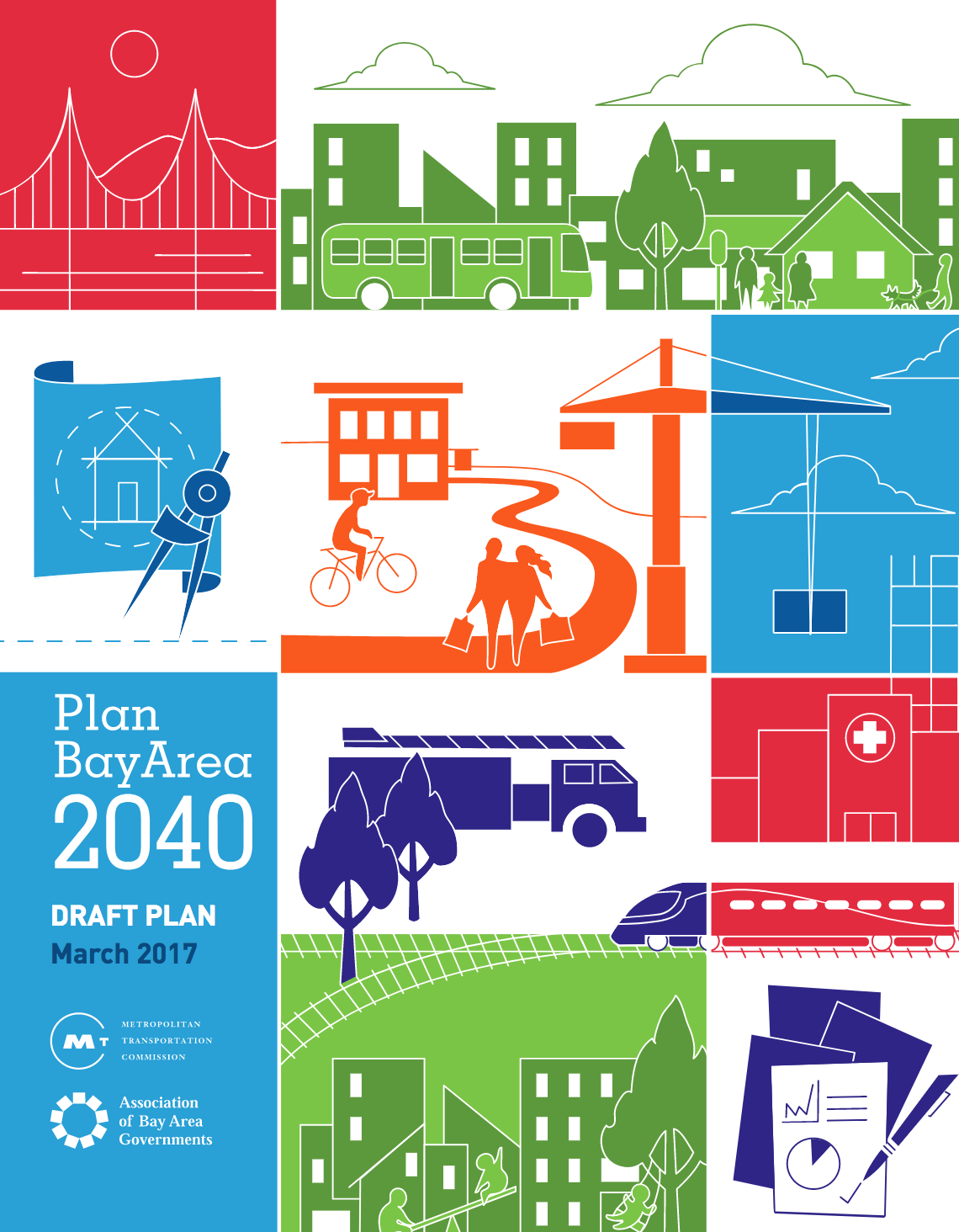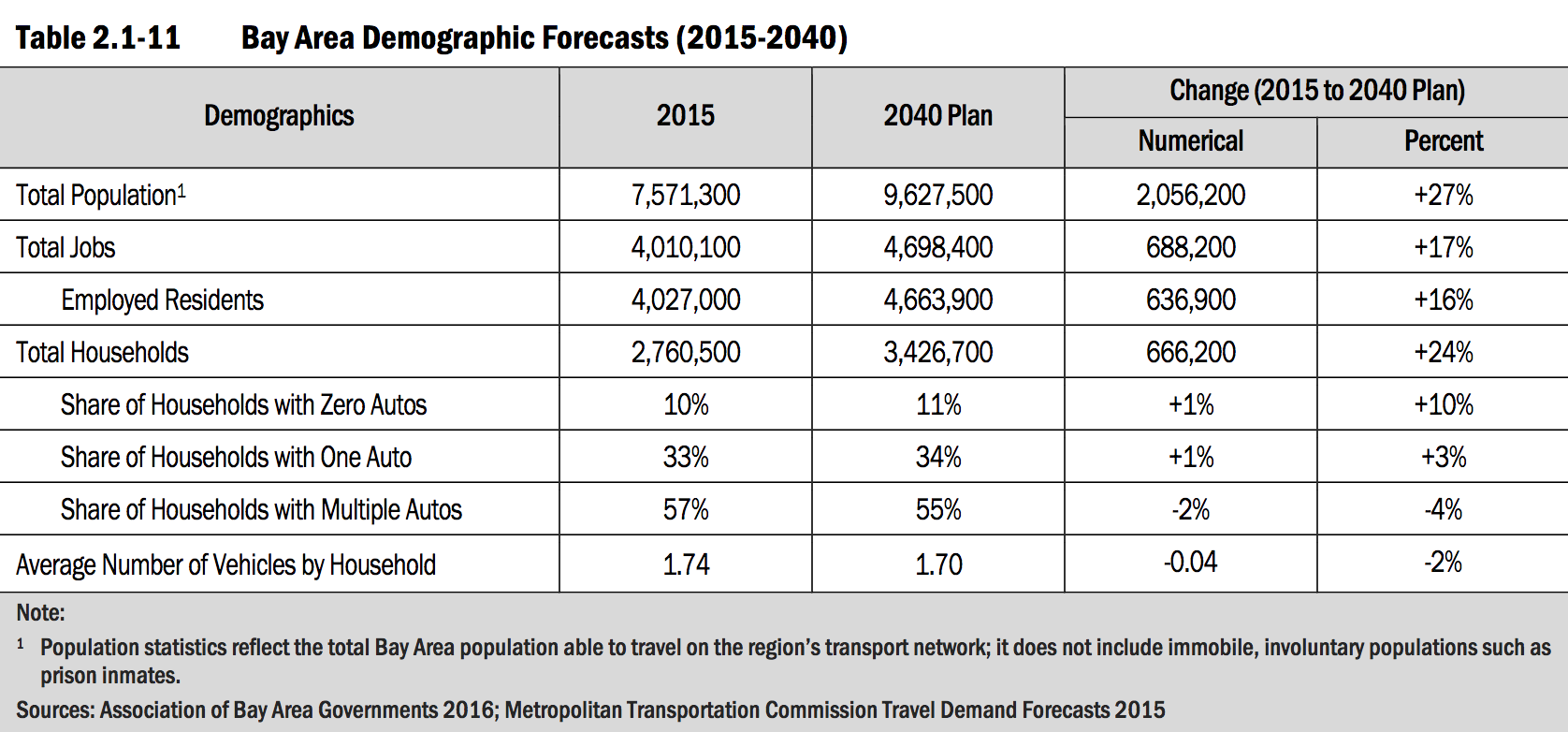 By Matt Williams
By Matt Williams
Plan Bay Area 2040 is the Bay Area’s Regional Transportation Plan. The draft plan and its accompanying Draft Environmental Impact Report were released in March 2017, and the final plan was adopted in July 2017. The plan will account for the expenditure of $303 billion through 2040.
By state law, the Regional Transportation Plan has to have an accompanying Sustainable Communities Strategy (SCS) to cut greenhouse gas emissions from transportation “through the promotion of more compact, mixed–use residential and commercial neighborhoods near transit (page 25 of final Plan Bay Area 2040).”
Details from the draft EIR raise questions as to the viability of the SCS. The first troubling disclosure is contained in Table 2.1–11, “Bay Area Demographic Forecasts (2015–2040) (pdf page 147; page 2.1–21).

This table has population, jobs and household figures for base year 2015 and estimates on the plan’s ending year of 2040. The Bay Area’s population is expected to increase by over 2 million. Households will grow in number by 666,200.
The households figure is important to know, because the average number of vehicles per household is also shown. For 2015, there were 1.74 cars per Bay Area household. In 2040, the estimate is 1.7. That works out to an increase of 1.1 million personal vehicles (a 21% increase). The Sustainable Communities Strategy is based on new households going into already developed urban areas (in the Bay Area, they are called Priority Development Areas). Where the 1.1 million additional vehicles will be parked is an important question. Another question is, on already congested local streets and arterials (eg, Van Ness Avenue in San Francisco), how will the additional vehicles fit onto the existing local streets and arterials? A third big question is whether building parking spaces in new residential developments increases costs and makes solving the housing crisis that much more difficult.
One of the objectives of the Sustainable Communities Strategy is to shift people from cars and light trucks to walking, biking and mass transit, such as buses. How will 1.1 million additional vehicles support this objective?